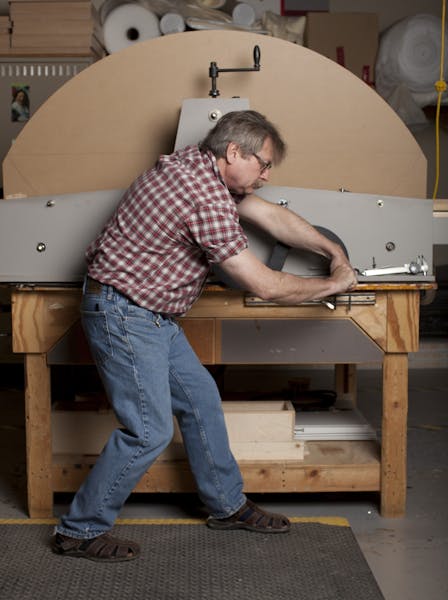It's not an easy job, cleaning the delicate white fur of a taxidermied polar bear after someone splatters it with cherry Icee. But somebody has to do it.
Or at least, somebody had to do it one time at the Science Museum of Minnesota, and that person was Rebecca Newberry. It's not a job you tackle with a scrub brush and bucket of soapy water. The stuffed bear's fur is extremely fragile, so Newberry spent weeks dabbing it with Q-Tips and blotter paper, one red-stained hair at a time.
As the Science Museum's conservator, Newberry takes care of the 1.75 million items in the museum's permanent collection as well as artifacts passing through in traveling exhibits. She has handled objects ranging from dinosaur bones to astronaut Neil Armstrong's gloves in the current show "Space: An Out-of-Gravity Experience." Handling with care, needless to say, goes with the job.
"When we take an object into our collection — to care for it in perpetuity — we agree to be stewards of these objects," Newberry said. "They don't necessarily belong to the museum, they belong to the public."
Newberry is one of many museum employees and volunteers who work behind the scenes to plan and install exhibits, build infrastructure, catalog and care for artifacts.
Museum visitors may barely realize these jobs exist. They're mostly aware of the "front of the house" people — tour guides, ticket takers and security guards — said Lin Nelson-Mayson, director of the Goldstein Museum of Design, who also chairs the Minnesota Association of Museums and co-chairs the National Alliance of State Museum Associations.
But there are also "all these people who make sure that when you visit a museum the experience you have is a good experience, that the objects in the exhibit are protected and that the storytelling is understandable," Nelson-Mayson said.
Newberry, a Science Museum employee for nearly 21 years, gets to come in contact with all kinds of amazing objects. She once packed a mummy in 40 pounds of silica gel so it could be transported to a hospital for a CT scan. She wrapped a frozen deceased silverback gorilla in a blanket she made of adult diapers so the animal could fly to California to be stuffed without moisture harming its skin.
Newberry insists she's not "a mystical person," but she has found that certain objects seem almost to radiate extra meaning, as when she found herself holding a set of iron shackles that had been used on slaves.
"I opened up the box and, oh God, there was so much energy coming off those shackles," she said. "So much misery and suffering."
Another powerful set of artifacts were plaster casts made of people who had died in Pompeii. When the volcano blew in 80 A.D., the Roman city and its inhabitants were instantly buried in hot ash. The ash hardened around the bodies, which eventually decomposed, leaving empty shapes so precise that their facial expressions are clearly readable.
"All in agony," Newberry said. "It's really powerful."
Artifact preservation techniques have vastly improved over the years. Decades ago, broken pottery or other objects might be reassembled with adhesives that were basically the equivalent of Elmer's glue. Newberry's job involves dealing with damage caused by well-meaning but primitive methods.
Once, a co-worker picked up a dinosaur bone and suddenly a chunk fell to the floor.
"The adhesive had failed," Newberry said. "How you handle museum collections isn't exactly the way you'd handle anything else in your life."
Katy Read • 612-673-4583
